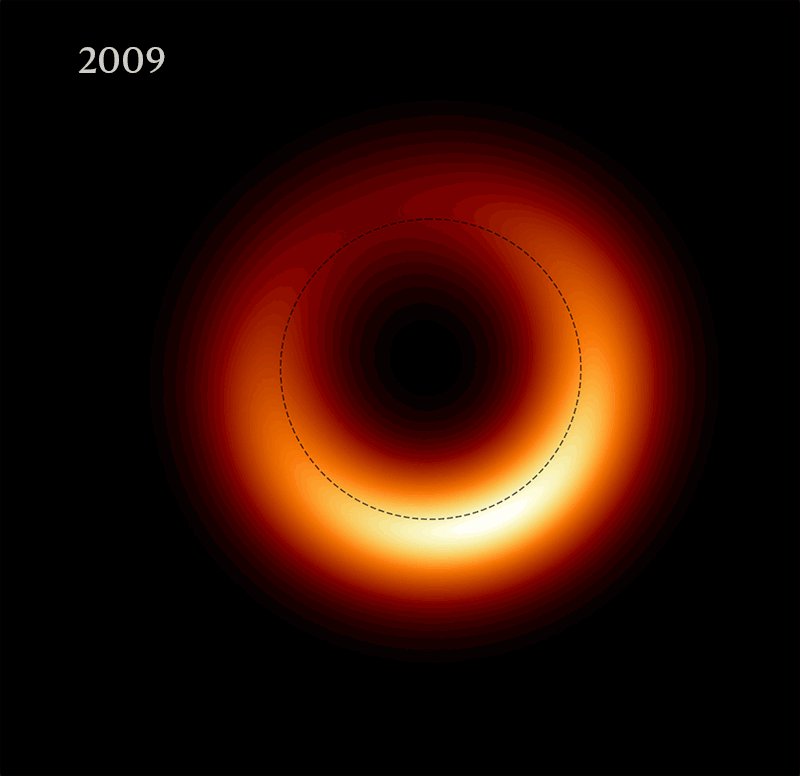
In 2019, a massive consortium of international scientists made the announcement of the century: they had the first picture of a black hole. The historic picture showed a ring of light swirling around the supermassive black hole at the center of the galaxy M87, located some 55 million light-years away. Now, astronomers have revisited data from earlier observations of the black hole, which they used to reconstruct the images for each year starting from 2009 all the way to 2019.
When you stitch together these images, you end up with a timelapse movie where each frame represents a snapshot of M87* for one year. It’s not the most fluid or eye-catching film you’ve ever seen, but its implications for science are worthwhile. What’s more, in the future, as more data is gathered, we might actually be treated to a more detailed recording of a black hole.
The original 2019 snapshot of M87* showed a dark circle, which is the black hole itself, surrounded by a swirling, bright ring. This bright ring is actually superheated matter that is spiraling into the void at high velocity. The interface between the void and the bright ring is the black hole’s event horizon — the point of no return from which nothing can escape, not even light.
To produce this image, more than 200 scientists affiliated with the Event Horizon Telescope (EHT) project combined data from eight radio telescopes located all around the world. By employing a technique called Very Long Baseline Interferometry, or VLBI, the instruments of all these observatories located thousands of miles from one another were linked to form a “virtual telescope” the size of planet Earth.
Ultimately, this allowed the scientists to discern the shape of the M87* event horizon, a feat comparable to resolving the shape of a doughnut on the surface of the moon from Earth.
Maciek Wielgus, a radio astronomer at Harvard University in Cambridge, Massachusetts, wanted to see what M87* looked like in previous years. Although the 2019 snapshot of the black hole was modeled from copious amounts of data that weren’t available in previous years, Wielgus and colleagues gained access to EHT observations since 2009.
Albeit of lower quality, these observations were enhanced by combining the limited data with mathematical models. The resulting images were much better than the team of researchers expected, revealing the same accretion disk around the event horizon.
The 2020 snapshot of M87* has been postponed due to the COVID-19 pandemic, but the astronomers hope to resume observations in 2021. They even plan on including additional observatories, one in Greenland, the other in France.
The findings appeared in The Astrophysical Journal.






